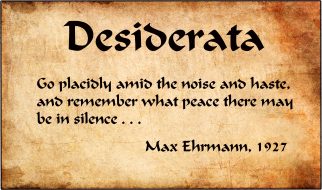I power nap almost every day. And I swear I?m no lazy bastard. In fact, power napping is one of my top productivity advice.
Power napping is hard. Like any skill, it takes practice. I?ve only started being good at it two years ago. I do it almost every day now. Before that, I would try at least once per week and I would ?fail? most of the time. Even to this day, I still don?t always fall asleep, and that?s okay.
*Please note that I?m not a doctor and the following is not a substitute to proper medical advice from a professional.
A power nap is a short period of rest where you never go past the first of 3 stages of sleep.
How long is a power nap?
A power nap is typically 20?30 minutes long. However, I found that my personal sweet spot is between 10?15 minutes. So, experiment to see what works best for you, but don?t go for longer than 30 minutes. The majority of experts agree that beyond 30 minutes is too long and can be more detrimental than not napping at all.
What is a coffee nap?
A powerful alternative is the coffee nap, that is, quickly drink a shot of espresso coffee right before your power nap. The caffeine takes about 20 minutes to kick in, so right at the same time as you finish your power nap.
I would suggest you don?t try coffee naps until you can do power naps though, for three reasons:
- Not everyone can quickly drink a hot coffee;
- It?s harder to fall asleep; and
- It?s quite powerful when you do it right. When I do coffee naps, I have to be ready to go to bed much later. It makes it much harder for me to fall asleep.
What are some misconceptions of napping?
I?m surprised that even to this day, when I mention to people that I power nap every day, they say things such as: ?you?re lazy, you?re unambitious, you have low standards.?
They ask me: ?How old are you? 3? 70??
Some people, still today, think that napping is for lazy people, toddlers, or the elderly. The truth is, people of all age groups benefit from power napping. More on that below.
Why should I power nap?
The Sleep Foundation identified the following benefits: it restores alertness, enhances performance, and reduce mistakes and accidents. It?s also an ?easy? way to get some relaxation and rejuvenation.
In a more practical way, power naps are good for restoring your energy after being awake a good amount of the day, say, eight hours for example. You can?t possibly be fully alert and performing after being awake for 8 hours.
That?s why they invented the concept of breaks during the Industrial Revolution. Sadly, breaks are not nearly as effective as power naps. In a way, you?re lazier when you take a break to anything else but nap. Yet it is the napper who is judged as lazy.
19 months ago I decided to experiment with my sleep schedule and wake up earlier. I started waking up at 5am. Knowing the benefits of power napping, I decided that I?d nap shortly after lunch to rejuvenate. After about a month of practice, I succeeded in power napping.
I can?t stress enough how positively that has impacted my life. Not only do I get to have three hours of focus before most people are up, but I?m also a lot more functional in the afternoon. With just that change, I wouldn?t be surprised if I became at least twice as productive as I previously was.
Remember, however, that power napping is a skill and takes practice to do properly. We?ll explain how to get better at it later in this article.
What are the pitfalls of power napping?
Power naps are not without pitfalls.
Sometimes, you may wake up disoriented and groggy. That happens more frequently when you don?t stick to less than 30 minutes.
A ?failed? nap may leave you in that state for about as long as you napped for. As such, unless you?ve mastered power napping, it can be detrimental to people who must perform right after waking up.
Also be careful with the time of the day you power nap. The later you power nap, the more ?dangerous? it becomes to disrupt your ability to fall asleep at night. You may also sleep less and have lower quality sleep. Most recommend power napping before the middle of the afternoon. I can power nap all the way to 6pm without affecting my sleep, but it?s different for everyone.
Where should I power nap?
With good practice, you can start to power nap pretty much anywhere. I?ve power napped in beds, on the floor, on my desk, on a chair, on park benches, and a few other places.
The ideal place to practice power napping probably is somewhere comfortable, but not too much. You don?t want to have a hard time waking up! You also want to practice where there will be very minimal distractions. No distraction is better.
It can be hard in an office setting, so I recognize that people who work from home have an advantage here. Some coworking spaces, like the Selina I was working from in Medellin, Colombia, are equipped with rooms specifically made for relaxing. WeWork offices are typically equipped with relaxation rooms as well.
If your office doesn?t have space for it or frowns upon power napping at work, bring awareness to the higher ups on the benefits of power napping! At offices with no space to power nap, I usually sleep leaning on my desk or leaning against my chair.
When should I power nap?
The short answer: for most people, before 3pm.
Because I wake up super early, I sometimes nap twice during the day. Once in the morning and once in the afternoon. I?d rather be able to fully focus by being energized than not. So again, people who judge that are missing the point.
Generally, however, it?s better to get a good night?s sleep over taking a nap in the morning. Napping in the morning is more of a remedy than a solution to fixing the root of the problem: improving sleep hygiene. Sleep expert Nick Wignall goes into more details about sleep hygiene in this video interview:
What I found works best for me is power napping about an hour after I had lunch. And because my energy levels are at its lowest after lunch, I typically focus on administrative tasks that don?t require me to think much. I do that for one hour on average, and then I power nap. I usually end up preparing for a power nap between 2:30pm and 3:30pm.
Between 2:00pm and 3:00pm is probably the best window for most people. But as with anything, experiment to see what works for you. Don?t give up on the first try. Practice consistently for 1?2 weeks to see if the time can really work for you.
How should I power nap?
What does a power nap typically look like?
Here are eight things to consider:
- Don?t power nap if you?re not tired enough. I usually fall asleep in about 10?15 minutes when I?m really tired. This is different for everyone. 10?15 is actually quite a lot. If I?m tired enough but need a break, I usually take a 15 to 20-minute walk.
- Put an alarm. I set mine for 25 minutes. I end up napping between 10?15 minutes. The alarm frees you from thinking about waking up on time.
- Don?t nap for more than 30 minutes. This depends on people obviously. 10?15 minutes work great for me. 20 minutes makes it hard for me to wake up.
- Cut off the distractions. I always listen to a song called Earth, from Gladiator?s soundtrack (by Hans Zimmer). I know other people who use earplugs. If you?re good at meditating, you can probably do without earplugs or music.
- Be comfortable but not too much. Napping in a comfortable bed makes it hard to get out. I used to nap on my chair, resting my head on the desk with my arms crossed over. It?s really not that comfortable. If you have access to a couch, I would go for that.
- A ?successful? nap is not always about sleeping. I don?t always fall asleep. You still gain energy back from relaxing.
- It takes some time to recover from the nap. Plan for 15?20 minutes to be back to full energy. A successful power nap almost entirely removes this grace period.
- Don?t nap when it?s close to bedtime. By close to bedtime, I mean less than 3?4 hours. You will have a hard time sleeping at night if you do that.
How can I practice?
Don?t judge a ?failed? nap. There are still benefits even if you don?t always fall asleep. Acknowledge that it does take time to fully recover as well. I?ve been doing it for about 2 years now and on average, I get 2?3 extra productive hours every day.
Trust me, you will fail at first. Don?t give up.
Like any skill, you have to do it consistently. So much so that it becomes a habit. Your body will start to feel tired at the same time every day, making it easier every day to power nap.
Also, if you?re able to stick to the same environment every time, your brain will get used it and associate it with power napping. Nowadays I always sleep on a mattress, on my back, arms on my stomach, with this song playing on repeat. Don?t play that song somewhere else or I?ll fall asleep! 🙂
If you?re a leader in your company, lead by example. A lot of people are shy and are afraid of looking like a slacker. Show them it?s okay to power nap. Encourage them to do it. Do it yourself.
If you work from public places like coffee shops or coworking spaces, just do it. The first time I did it, I was afraid of judgment. But seriously, who cares. I cared more about my productivity than for what people thought.
And to my surprise, I didn?t get judgments, but curiousness. People started asking me why I was doing it, how I was doing, etc. People started doing it after.
Conclusion
Yawning constantly? Nap!
Can?t do simple tasks? Nap!
Struggling to keep your eyes opened? Nap!
Nap! Nap! NAP!
Power napping is not only for lazy people, toddlers or the elderly. Everyone can benefit from it.
Power nap in the middle of the day when you need it. Make better decisions, be more productive, work longer and better. Your brain deserves a break too!
You can do this!
Thanks for reading, sharing, and following! 🙂

